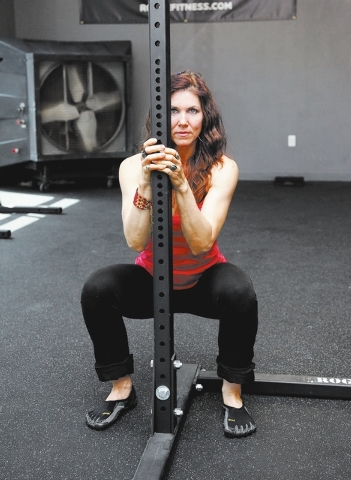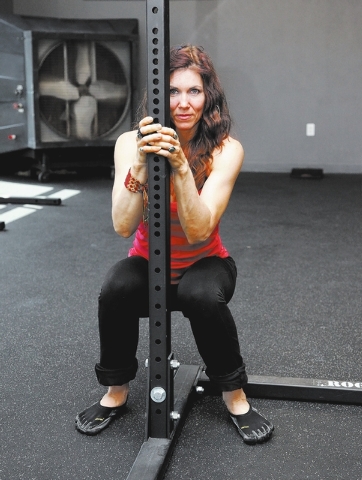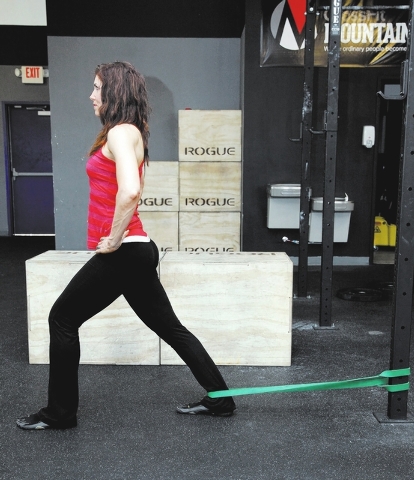Fixing ankle problems helps athletes improve performance






Ankles seem like an insignificant joint when compared to the power and strength of the hip or shoulder. Believe me, they do have their tasks and they can affect your performance in a major way.
If you have an ankle issue, it may be simple to correct with a little ankle pre-hab. Pre-hab describes things you can do to help prevent major injuries. These things may include stretches, foam rolling and even strength and stability exercises.
Ankle efficiency isn’t just the dichotomy between strength and weakness. It also requires proper positioning. For example, take an athlete who is strong but for some reason he/she has poor ankle mechanics during movement. Maybe this athlete has the common form fault of the feet turning out and the arch collapsing during their movements. This means that they will never be as stable during movement as they could be. Power bleeds out at the ankle because the joints are not able to create a firm foundation.
Fixing the ankle positioning will help the athlete see better performance and realize strength gains.
Let’s look at another athlete. This person has good ankle and foot position but weak stability. He/she finds it difficult to maintain a stable position during movement. This may manifest in a mechanically correct air squat but a poor weighted squat. Another “tell” is poor form when the athlete is fatigued.
Both athletes may find themselves battling discomfort at other places in the kinetic chain such as the knees or back. These can be related to the ankle. If the ankle instability or weakness has gone on for an extended period of time, there may be a history of serious problems that help contribute to the instability. These injuries can make it difficult to train.
In the case of the first athlete, I would approach the ankle issues from a tight muscle standpoint. Since they are relatively strong they may have a muscle imbalance tying up their efficiency. I would have the athlete use the foam roller and explore possible tightness in the calf and even the inner and outer thighs. See my earlier columns on foam rolling these areas. After rolling, I would recommend today’s stretch with a resistance band. It allows for a progressive stretch of the calf muscles as well as a slight joint distraction to loosen the connective tissue at the ankle. Take your time with this stretch. There is no reason to tip your pain scale to a superintense 10 out of 10. Ease into it. Allow the muscles to relax.
The second athlete needs a different approach. Strength and stability training will be a great asset for his/her performance. The second of today’s exercises is a modification of standing. I know it sounds almost too simple, but the difficulty is in the progressions. To stand, a person positions the feet at hip width and points the toes slightly outward. Stability in this position comes from squeezing the butt muscles and tightening the core while maintaining a straight back. Squeezing the glutes creates external rotation of the hip which carries down the leg to the, you guessed it, ankle. This automatically puts the ankle joint into a stable position.
Today’s standing-lift exercise uses movements you already know to create strength. Start with a squat and see if you can perform a set maintaining your ankle stability. Don’t let the arch fall, or the heel rise. Even the big toe likes to elevate sometimes. The foot stays flat. If you can complete a set of two then add a little weight and do it again.
Before long you will find a weight that may result in form faults. Don’t give up; keep at it until you earn the next progression. This type of pattern therapy works well for dead lifts, lunges, leg presses and anything else that requires the feet to be firmly planted.
Past ankle injuries can make this process a long one; especially if you have had a few bad sprains or even the misfortune of breaking one of your ankles. Ideally, you did all of your rehabilitation exercises and have been released. In cases of past injuries, I recommend increasing the weight slowly and not doing too much at one time. One day of pattern therapy isn’t enough to bring you back from major injuries. It may take six to 12 weeks of diligent work to feel confident on your feet again.
Chris Huth is a Las Vegas trainer. He can be reached at 702trainer@gmail.com. If you are a Las Vegas trainer and want to share your love of fitness as a guest coach, please contact him. Consult your physician before beginning any exercise program.












